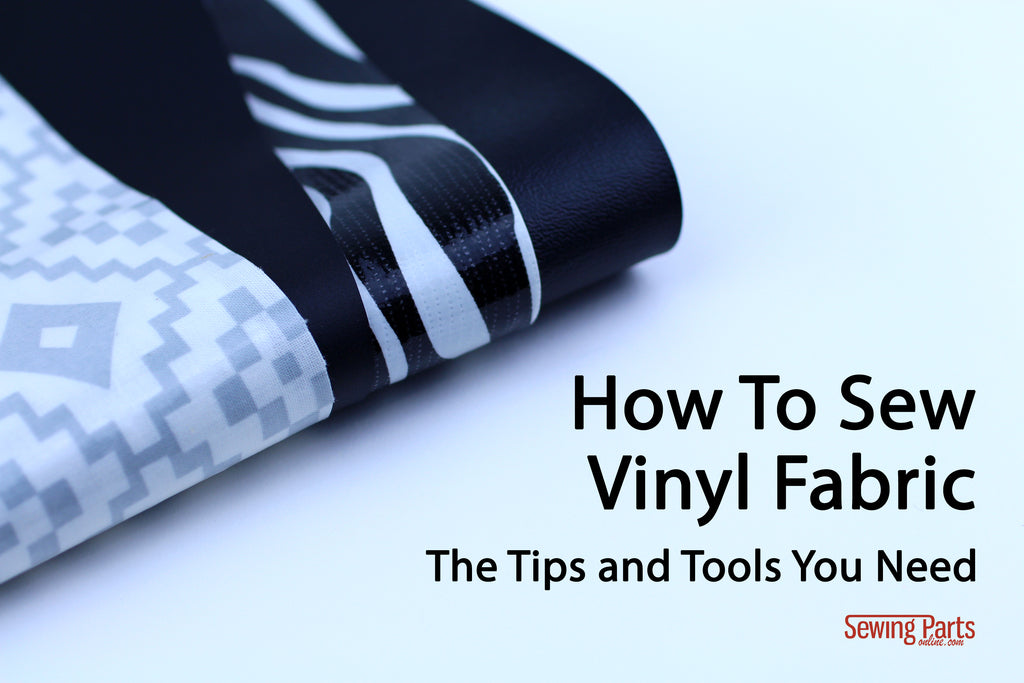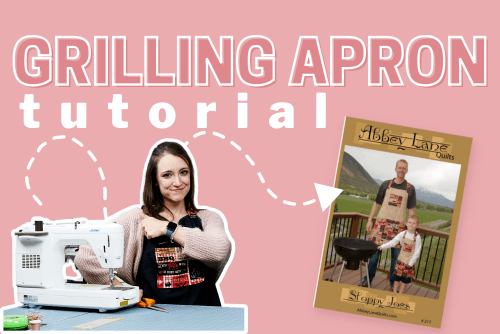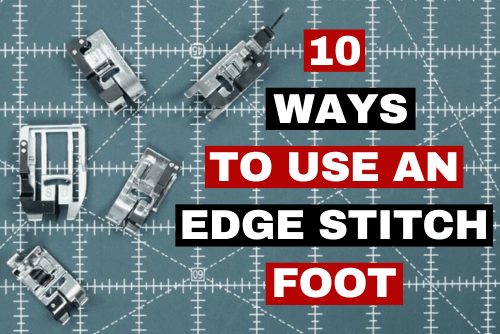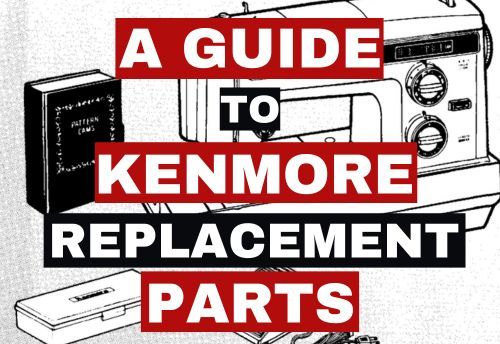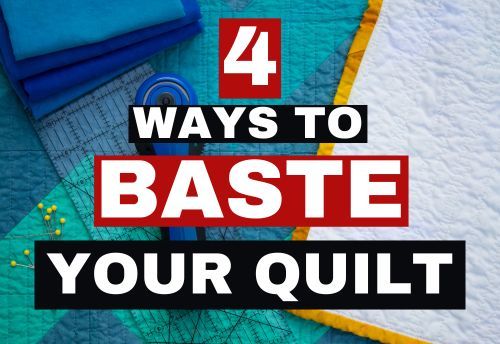Are you ready to learn how to sew vinyl? Then you've come to the right place!
Vinyl fabric is very versatile and is ideal for indoor and outdoor sewing projects. You can make everything from patio cushions and pillows to beach bags to raincoats and baby bibs.
”Vinyl” is really just a blanket term for any fabric that has a “plastic” coating. This includes artificial leather (pleather), oilcloth, laminated fabric, Chalkcloth, etc. These fabrics are water-resistant, durable, flexible, and relatively inexpensive.
The trick to sewing vinyl is using the proper tools and adjusting your machine to the proper settings. In this article, we discuss everything from the foot to the needle to the stitch length. Additionally, we feature all these tips and more in our video, Tips For Sewing Vinyl Fabric.
First, let’s talk about the most common types of vinyl you may come across.
PVC: PVC stands for polyvinyl chloride, which is a synthetic plastic polymer. PVC fabric is simply polyester with a layer of polyvinyl chloride. Polyester fabric can be reinforced heavily for industrial projects or be light enough for clothing.
Artificial Leather: These range from resembling animal hides to the latex-look of "Pleather". It's much less expensive than buying an authentic animal hide, and for a population of people, more ethical. It's also water resistant and comes in many styles, textures, and prints. Some bolts will have a cloth backing and others will not.
Oilcloth: This super slick material often comes in fun, brightly colored patterns. It's waterproof, durable, and very flexible. It's for kids crafts and is low maintenance. Traditionally, Oilcloth was duck cloth coated with boiled Linseed oil to give it a waxy, waterproof topping. Now, it simply a cotton mesh coated with a thick layer of PVC.
Laminated Fabric: Laminated fabric is usually a high-quality cotton coated with a light layer of polyurethane film. It's thin, flexible, and drapes well. It's ideal for projects you want to have water-resistant properties but also remains lightweight and flexible with a pleasing drape.
Chalk Cloth: Slightly heavier than Oilcloth, Chalkcloth is wonderful for craft projects. Just like a chalkboard, you can draw all over this fabric with regular chalk. It's great for reusable signs, tags, placemats, and home decor.
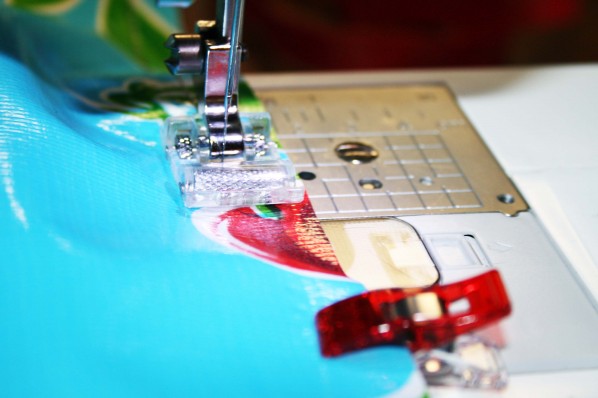
The Foot: Walking Foot -or- Roller Foot - or- Non-Stick Foot
The surface of vinyl is sticky and slippery at the same time. It's notoriously difficult to feed with a standard General Purpose Foot. A Walking Foot will help pull the fabric through at the same rate as your feed dogs. The Roller Foot and Non-Stick foot are also fantastic tools for feeding Vinyl, as well as many other fabrics.
The Needle: Leather 90/14 or Universal 100/16
You can normally find these in Universal, "Leather", or "Denim". You can even use Jean Twin Needles for perfect parallel stitching. If you find a Leather or Denim Needle that's a size 90/14, you're in the clear. It's all about the needle design.
The Thread: Quality All Purpose, Heavy Duty, or Industrial Thread
If you don't expect to be constantly tugging at the seams, general purpose thread works well. However, if the vinyl you're using has a fair bit of weight and you expect your seams will experience stress, use Heavy Duty Thread or Industrial Thread instead. It's often beneficial to pull the needle thread to the back and manually tie your knots.
The Pins: None.
Using pins will cause permanent holes which compromise the strength of the fabric. And any hole can easily tear into bigger holes. Wonder Clips are great.
Stitch Length: 3.0 mm or greater.
Anything less than a 3.0 stitch length causes the seam to perforate (think of when you tear paper out of a notebook). It really compromises the strength of the seam. As far as width, try to keep it wider than 2.5 mm.
Pressing: No iron.
An iron will instantly melt the fabric. Instead, finger press the seams or tap the seams with a rubber mallet. If you have some serious creases, try leaving it out in the sun or somewhere warm. You can even utilize steam from a shower. You can add weight (like a heavy textbook) to flatten out creased or set seams, as well.
Did you find this information helpful? Share with your friends or download the Quick Reference Fabric Card for your own use!


